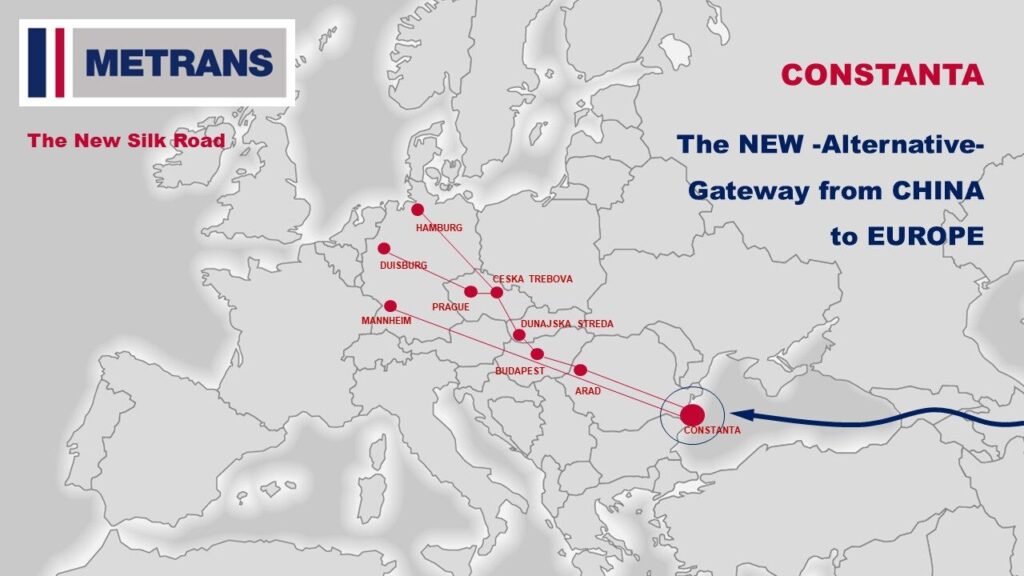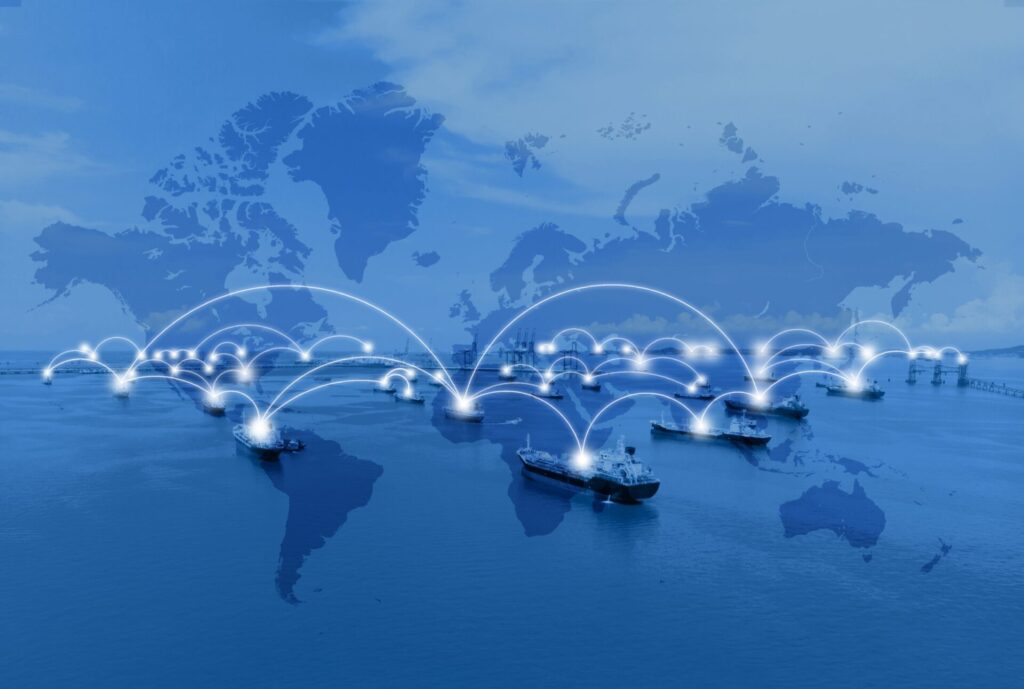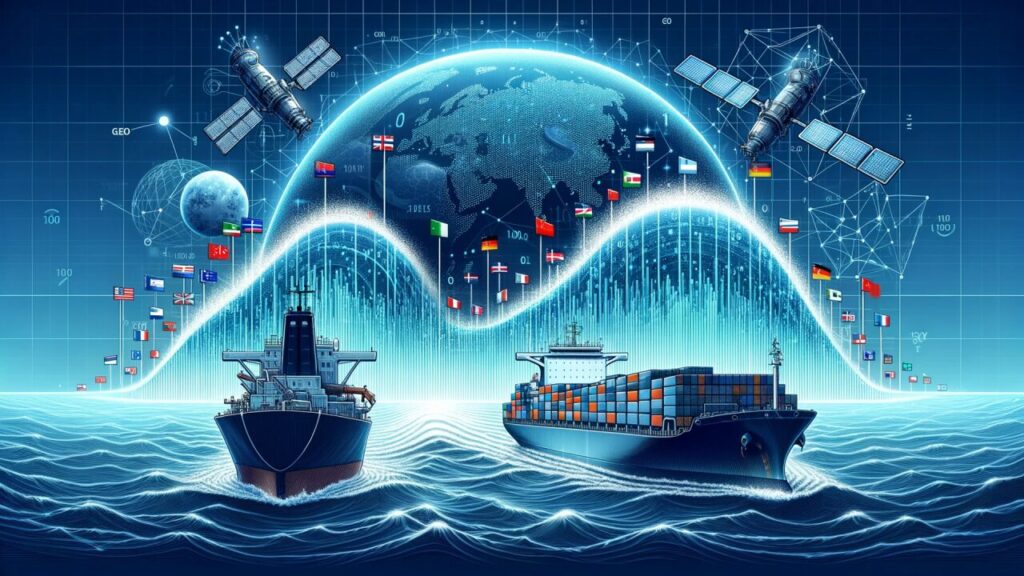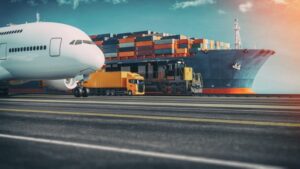The ship route from Romania to China is one of the important trade links between Europe and Asia. It connects the Black Sea port of Constanta in Romania with various ports in China, such as Da Chan Bay, Qingdao, Shanghai, and Tianjin. This route has a long history, a significant economic impact, and a promising future, but it also faces some challenges and obstacles. In this article, we will explore the historical background, economic significance, current state and growth, challenges and obstacles, key players and stakeholders, infrastructure and logistics, trade and business opportunities, and future prospects and potential developments of this ship route.
Historical Background of the Ship Route

The ship route from Romania to China can be traced back to the ancient Silk Road, which was a network of trade routes that connected China with the Mediterranean region, including the Roman Empire. The Silk Road facilitated the exchange of goods, ideas, and culture between the East and the West for centuries. However, the Silk Road declined in the 15th century due to the rise of maritime trade and the Ottoman Empire’s control over the land routes.
The modern ship route from Romania to China was revived in the late 20th century, as part of the global integration of trade and commerce. Romania and China established diplomatic relations in 1949, and since then, they have developed a close and friendly partnership. Romania was one of the first countries to recognize and support China’s reform and opening-up policy in the late 1970s, and China has been one of Romania’s major trading partners and investors in the past decades. The ship route from Romania to China has played a vital role in facilitating the bilateral trade and cooperation between the two countries.
Economic Significance of the Ship Route
The ship route from Romania to China is economically significant for both countries, as well as for the regions they belong to. For Romania, the ship route from China provides access to the huge and growing Chinese market, as well as to other Asian markets via transshipment. Romania exports mainly agricultural products, machinery, chemicals, and textiles to China, and imports mainly electronics, machinery, textiles, and metals from China. The ship route from Romania also connects to other European ports, such as Rotterdam, Hamburg, and Antwerp, via the Black Sea and the Mediterranean Sea, thus enhancing Romania’s role as a regional hub and gateway.
For China, the ship route from Romania provides access to the European market, which is China’s largest trading partner. China exports mainly manufactured goods, such as electronics, machinery, clothing, and toys, to Europe, and imports mainly raw materials, such as oil, gas, iron ore, and copper, from Europe. The ship route from Romania also connects to other Asian ports, such as Singapore, Hong Kong, and Busan, via the Indian Ocean and the South China Sea, thus expanding China’s maritime reach and influence.
The ship route from Romania to China is also part of the larger Belt and Road Initiative (BRI), which is China’s ambitious plan to build a network of infrastructure and trade links across Eurasia and beyond. The BRI aims to promote connectivity, cooperation, and development among the countries along the routes, and to create a community of shared interests, destiny, and responsibility. The ship route from Romania to China is aligned with the BRI’s vision and goals, and can contribute to the BRI’s success and benefits.
Current State and Growth of the Ship Route
The ship route from Romania to China is currently in a state of steady growth and development, as evidenced by the increasing volume and value of trade, the rising number and frequency of ships, and the improving quality and efficiency of services. According to the statistics from the World Bank, the bilateral trade between Romania and China reached $6.8 billion in 2020, an increase of 8.7% from 2019, despite the impact of the COVID-19 pandemic. The trade volume accounted for 1.8% of Romania’s total trade and 0.1% of China’s total trade in 2020.
According to the data from ports.com, the quickest way to get from Romania to China by ship will take about 25 days 17 hours and departs from Constanta (ROCND) and arrives into Da Chan Bay (CNDCB). There are ships departing every 2-4 weeks on this route. ZIM is one of the carriers that operates regular services on this route with ships departing every 2-4 weeks. The most frequent route is from Constanta to Qingdao (CNQDG), which takes about 27 days 7 hours and has 1-2 ships departing every week. CMA CGM, Evergreen, and COSCO are some of the carriers that operate frequent services on this route.
According to the information from fluentcargo.com], the quickest way to get from Romania to China by air freight will take about 16 hours 32 minutes and departs from Henri Coandă International Airport (OTP) and arrives into Beijing Capital International Airport (PEK). There are flights departing 2-4 times a day on this route. Turkish Airlines is one of the carriers that operates regular services on this route with flights departing every 1-2 weeks. The quickest way to get from Romania to China by road will take about 4 days 6 hours and covers a distance of 8,095 km. Truck operators are the main carriers that offer road transport services on this route.
Challenges and Obstacles Faced by the Ship Route

The ship route from Romania to China is not without challenges and obstacles, which may hinder its growth and development in the future. Some of the main challenges and obstacles are:
- Geopolitical risks and uncertainties: The ship route from Romania to China passes through some regions that are prone to conflicts, disputes, and instability, such as the Middle East, the Indian Ocean, and the South China Sea. These regions may pose threats to the security and safety of the ships and the cargo, as well as to the smooth and uninterrupted operation of the route. Moreover, the ship route from Romania to China may also be affected by the changing relations and dynamics among the major powers, such as the US, the EU, Russia, and India, which may have different interests and agendas regarding the BRI and the regional order.
- Environmental challenges and impacts: The ship route from Romania to China involves a large amount of energy consumption and greenhouse gas emissions, which may contribute to the global climate change and environmental degradation. The ship route from Romania to China also faces the risks of natural disasters, such as storms, floods, and earthquakes, which may damage the infrastructure and disrupt the services. Furthermore, the ship route from Romania to China may also have negative impacts on the marine ecosystems and biodiversity, such as pollution, noise, and invasive species, which may harm the natural resources and the livelihoods of the local communities.
- Regulatory barriers and differences: The ship route from Romania to China crosses multiple countries and regions, which may have different laws, regulations, standards, and customs, regarding the trade and transport of goods and services. These differences may create difficulties and delays for the clearance and delivery of the cargo, as well as for the compliance and enforcement of the rules and agreements. Moreover, the ship route from Romania to China may also face the challenges of trade protectionism and unfair competition, which may impose tariffs, quotas, subsidies, or sanctions, on the goods and services traded along the route.
Key Players and Stakeholders in the Ship Route

The ship route from Romania to China involves various players and stakeholders, who have different roles and interests in the operation and development of the route. Some of the key players and stakeholders are:
- Governments: The governments of Romania and China are the main promoters and supporters of the ship route, as they have signed several agreements and memoranda of understanding to enhance the bilateral trade and cooperation along the route. The governments of Romania and China also provide policy guidance, financial assistance, and diplomatic coordination for the implementation and improvement of the route. The governments of other countries and regions along the route are also important players and stakeholders, as they have the authority and responsibility to regulate and facilitate the trade and transport of goods and services across their territories.
- Carriers: The carriers are the main operators and providers of the ship route, as they offer various modes and options of transport, such as air, sea, and road, for the cargo and the passengers. The carriers include airlines, shipping lines, truck operators, and logistics companies, which have different capacities, costs, and qualities of services. The carriers compete and cooperate with each other to attract and retain customers, as well as to optimize and innovate their operations and technologies.
- Customers: The customers are the main users and beneficiaries of the ship route, as they trade and exchange goods and services along the route. The customers include exporters, importers, manufacturers, retailers, and consumers, who have different demands, preferences, and expectations for the transport of their cargo and the delivery of their orders. The customers influence and shape the market and the performance of the ship route, as well as the feedback and the satisfaction of the services.
- Other stakeholders: The ship route from Romania to China also involves other stakeholders, who have various interests and impacts on the route. These stakeholders include international organizations, such as the UN, the WTO, and the IMO, which set and monitor the rules and standards for the trade and transport of goods and services along the route. These stakeholders also include civil society groups, such as NGOs, media, and academia, which raise and address the issues and concerns related to the social and environmental aspects of the route.
Infrastructure and Logistics Supporting the Ship Route

The ship route from Romania to China relies on various infrastructure and logistics facilities and services, which enable and enhance the trade and transport of goods and services along the route. Some of the main infrastructure and logistics supporting the ship route are:
- Ports: The ports are the key nodes and hubs of the ship route, as they provide the access and connection between the sea and the land, as well as the loading and unloading of the cargo. The main ports involved in the ship route from Romania to China are:
- Constanta: Constanta is the largest port in Romania and the Black Sea, and one of the busiest ports in Europe. It has a total area of 3,926 hectares, a quay length of 29.3 km, and a water depth of up to 19.5 m. It can handle various types of cargo, such as containers, bulk, general, and project cargo, as well as passenger and cruise traffic. It also has a free trade zone, a logistics park, and a multimodal terminal. Constanta is connected by rail and road with the rest of Romania and Europe, and by sea with other ports in the Black Sea, the Mediterranean Sea, and beyond.
- Da Chan Bay: Da Chan Bay is a modern and efficient container terminal in the Pearl River Delta region of China, and one of the fastest-growing ports in the world. It has a total area of 2.77 million square meters, a quay length of 4.2 km, and a water depth of up to 16.5 m. It can handle up to 10 million TEUs per year, and has 16 super post-panamax quay cranes, 58 rubber-tyred gantry cranes, and 176 terminal tractors. Da Chan Bay is connected by rail and road with the major cities and industrial zones in China, and by sea with other ports in Asia, Europe, and beyond.
- Other ports: Besides Constanta and Da Chan Bay, there are other ports involved in the ship route from Romania to China, such as Qingdao, Shanghai, and Tianjin in China, and Rotterdam, Hamburg, and Antwerp in Europe. These ports have different capacities, facilities, and services, and offer various options and alternatives for the trade and transport of goods and services along the route.
- Railways: The railways are the main modes and channels of the land transportation of the ship route, as they provide the link and integration between the ports and the inland destinations, as well as the speed and reliability of the cargo delivery. The main railways involved in the ship route from Romania to China are:
- China-Europe Railway: The China-Europe Railway is a network of scheduled container block trains that transport cargo over land between major cities in China and destinations in Europe. These long-haul rail services operate on fixed routes, timetables, and transit times. They offer various advantages, such as fast and reliable delivery, extensive network coverage, diverse types of cargo, traceability and security, and lower costs and emissions compared to air and sea transportation. There are several China-Europe Railway routes that connect Romania and China, such as Chongqing-Bucharest, Zhengzhou-Bucharest, and Chengdu-Bucharest.
- Other railways: Besides the China-Europe Railway, there are other railways involved in the ship route from Romania to China, such as the Romanian rail network, which connects Constanta with other cities and regions in Romania and Europe, and the Chinese rail network, which connects Da Chan Bay with other cities and regions in China and Asia. These railways have different standards, gauges, and systems, and offer various services and solutions for the trade and transport of goods and services along the route.
- Other infrastructure and logistics: Besides the ports and the railways, there are other infrastructure and logistics facilities and services that support the ship route from Romania to China, such as roads, airports, warehouses, customs, and agencies. These infrastructure and logistics provide additional modes and options of transportation, such as air, road, and multimodal transport, as well as storage, clearance, and delivery of the cargo. They also provide flexibility, convenience, and efficiency for the trade and transport of goods and services along the route.





